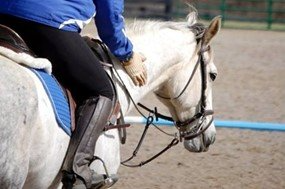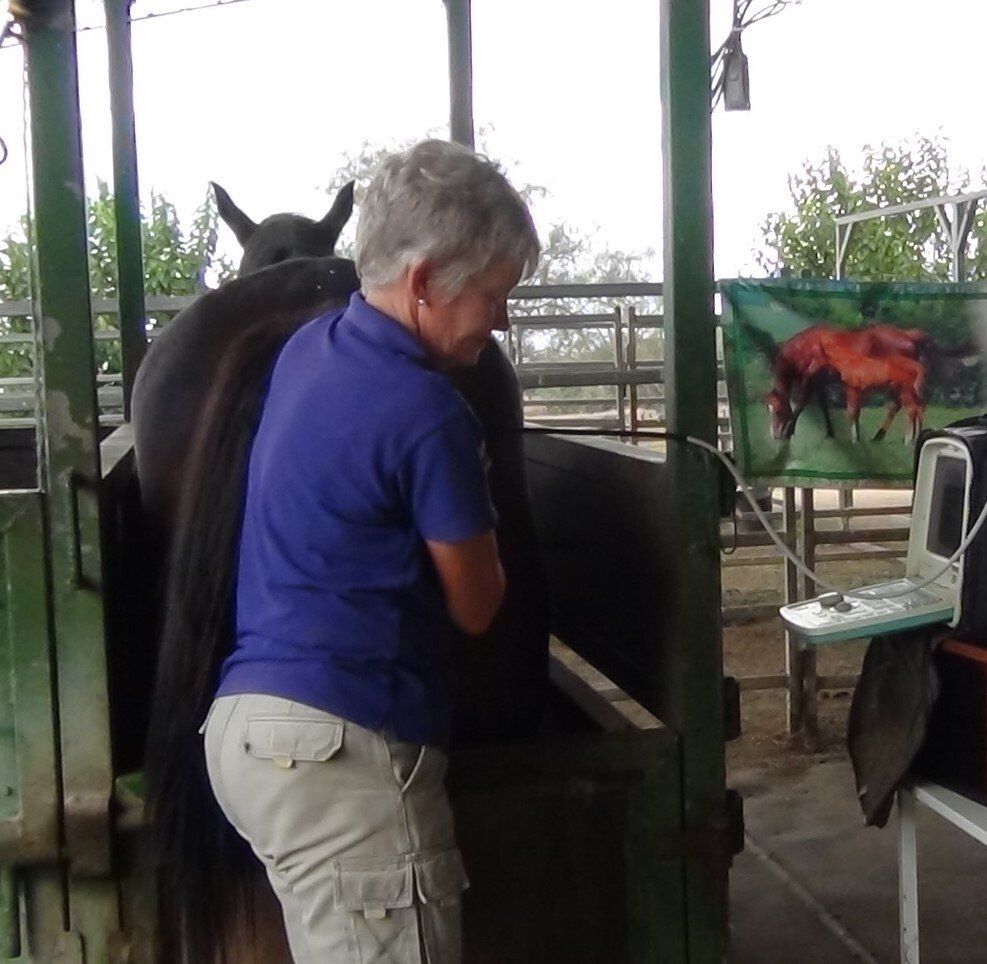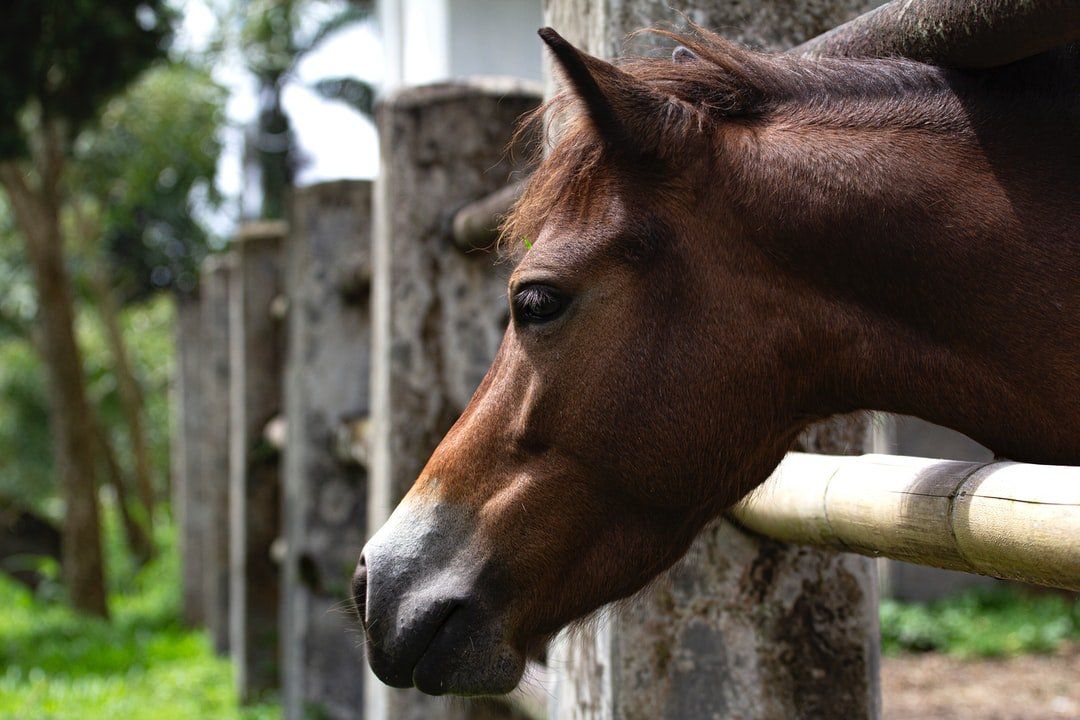Horse Talk

ARTIFICIAL LIGHTING FOR BROOD MARES ADVANTAGES Dry mares will cycle earlier, avoiding the inconvenience of spring oestrus early in the breeding season (spring oestrus is constant cycling without producing a good follicle or ovulating) and anoestrus (small). Both conditions can be difficult and expensive to treat. Wet mares will have their gestation period reduced by about 10 days while still producing a normal size foal. Foaling mares will have their foal heat at about five days, allowing them to be re-cycled earlier and covered at 12-14 days. (However, the natural cleansing period after foaling is affected.) HOW DO WE DO IT? The lighting system must achieve the equivalent of 16 hours of daylight per day. In practical terms this means switching on the lights one hour before dusk and switching them off at midnight. A good system will have the lights on a timer that switches the lights off at midnight and opens a gate to allow the mares back in to their paddocks. Another way to achieve this amount of light (and reduce the electricity cost) is to give one hour of light at 9.5 hours after sunset. To do this, check the weather segment in the daily media (television or newspaper) which will state the time of sunset for the following day. For example – if the sunset is at 5.15pm the lights will need to be turned at 2.45am and off at 3.45am. BUT – for the program to be successful you MUST keep track of the sunset time and adjust the light switch timer accordingly. Longer periods of lighting and/or continuous lighting are expensive and can be counterproductive. THE GOOD NEWS! Previous recommendations have been 7 foot candles (= 70 lux) ** of light at hoof level. Recent research indicates that the amount of light required may not be as much as previously thought - just enough light to illuminate the area will be sufficient and the lights are only required for 35 days from 21 st June. RUGS Rugs will keep the dry mare stress free during the colder months, thereby helping them to cycle earlier. Similarly, rugging will reduce the stress for in foal mares, and may reduce the risk of abortion. They can also be stabled, but DO NOT be tempted to leave the lights on all night, as this will upset the dark / light balance. WHEN TO BEGIN Light “treatment” must be commenced from the 21 st June (the shortest day of the year) and continue until early September. **** One foot candle is a standard measure of intensity of illumination and is the amount of light from one candle in a one foot radius at ground level. In other words, 7 foot candles will allow enough light for your mare to read the racing results. Recent research indicates the amount of light required is not as much as previously thought and the lights can be turned off after thirty-five (35) days. Just enough light to illuminate the area will be sufficient.
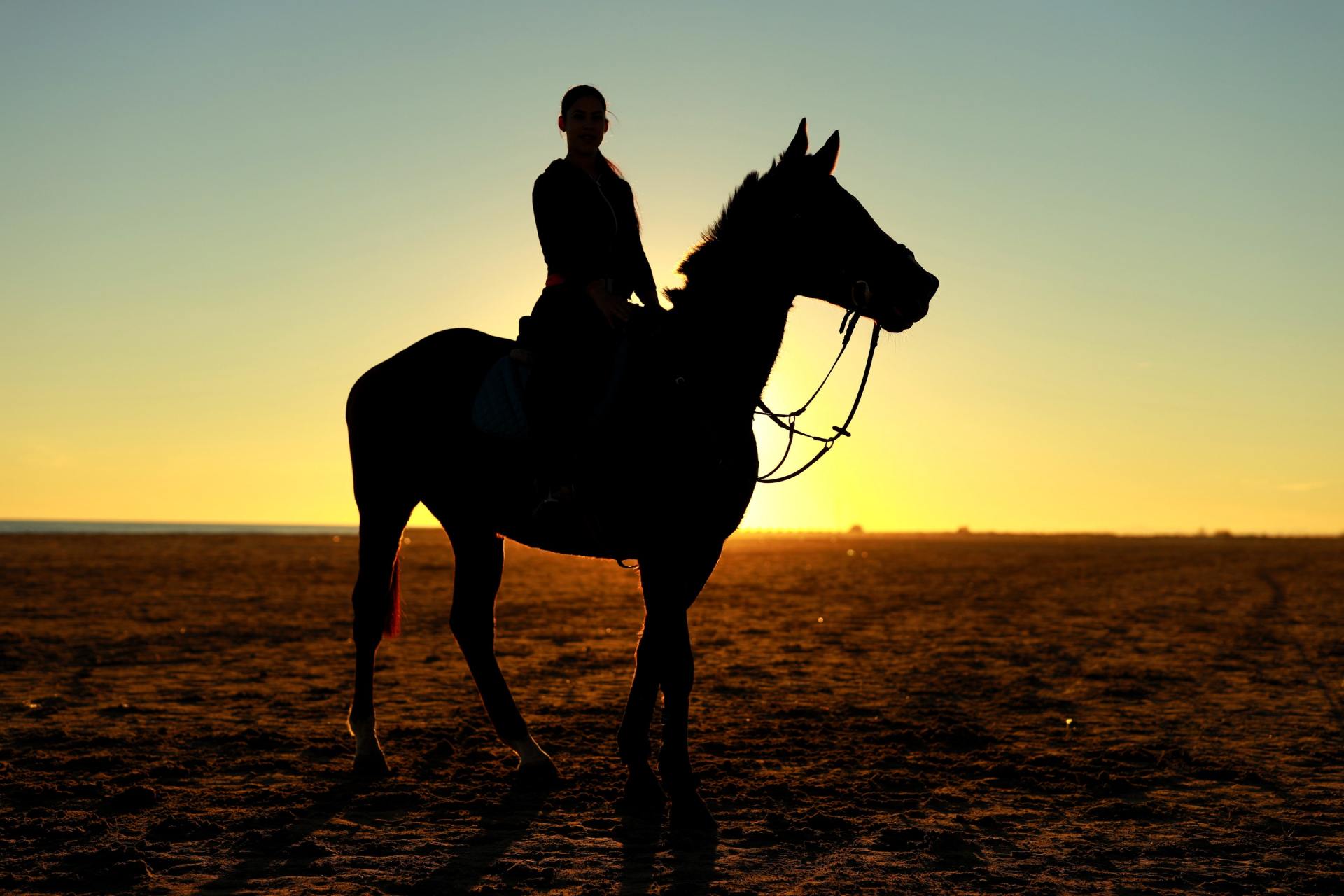
LIGHT READING ANOTHER HORSE OWNER IS BORN So you've bought yourself a yearling? Congratulations, you're in for a lot of fun. The breaker confides that he likes your filly very much. Words and phrases like 'Intelligent', 'smart on her feet', 'quick learner' and 'lovely mover' come forth. He broke in last years Oaks winner and your filly is at least as good as she was at the same stage. If anything yours is better. How easy is this? Your trainer isn't the sort of bloke who gets carried away, he tells you, but honestly this filly could be anything. He doesn't want to get your hopes up too high, but he suggests you buy her younger brother before your barrier trials. And by the way have you paid up for her for the Slipper? Make sure you do. Months later your trainer has her moving along at three-quarter pace. Words like 'freak', 'champion' and 'do you remember a filly that used to race called Toy Show', come down the phone lines, even though he reminds you that he's trained so many winners he can't remember. He adds that 'mum's the word' and not to tell anyone, even your own mother about her ability or she'll start in the red at her first race. He rings you one day. You nearly have a heart attack getting to the phone, she's a little shin sore. Nothing to worry about. We could persevere and race her, but she's too good to risk. We'll put her away for the big races later on. You plan your holidays from work so you are free around Golden Slipper time. The day arrives. She's entered in a barrier trail. You're there with the wife and kids, new binoculars and stop watch around the neck. You spot her before the trial. To your untrained eye she looks a bit like Bint Marscay, only bay. The trainer calls you over and divulges that 'you don't get any money for barrier trials'. You don't want to show her up do you? You'll get a better price for her if she lobs along behind then and gets a bit of experience. Of course she runs last. The trainer gives you the impression that he's delighted with the run. He introduces the jockey who rode her. He squeaks out something you don't quite catch and the trainer beams. So you beam. Now the big day comes. She's entered in a Maiden at Gatton and you can hardly contain yourself when she's quoted a 25/1 in the paper before the race. You do a few quick calculations in your head and dollar signs drown your thoughts of what you are going to do with all the winnings. You buy a new suit and tie to match your filly's racing silks. You later discover that you are the only person at a Gatton wearing a tie. You meet the trainer half and hour before the race and for the first time you notice he has a nervous twitch. You notice a sense of hesitancy, an aura of tentativeness about him that you hadn't noticed before. Now phrases like 'it's pretty hard to win first up', 'don't want to knock her about' and 'she'll be improved by the run' flow from his lips. You ask if you should back her. Maybe have something going each way. 'I wouldn't be going mad'. She runs last. 'Kingston Town got beaten at his first start' and 'she's still very green' come from the trainer. ''Is that her back there' and 'why didn't she win' come from the kids, and 'we could have had a pool for the cost of this animal' comes from the wife. Like a parent with an ugly child, you just have to make the best of it. Your expectations drop just a smidgen. Instead of the Golden Slipper you leaf through the calendar looking for a maiden at Esk. Your trainer relates the Reckless legend - he had over 200 starts before he won a race. Super - another 199 starts to go. Further training bills and nine runs later things haven't improved. Prior to her first run your cheque for her training expenses was in the return mail, but now you are almost two months behind with the payments. You call the bloodstock agent again. He tells you the market has dropped. It's a pity you raced her, she would have been worth more if she hadn't raced. Didn't the trainer tell you she was a 'cockroach'? By now your enthusiasm hasn't just waned, it's been totally destroyed. Not only have you stopped driving hundreds of miles to see her but you don't even bother listening to her race on the radio or you wouldn't even if they broadcast the Surat meeting. The filly has a spell. And your attitude has changed, instead of insisting that she has nothing but the best, you haggle the agistment property over the rates and suggest they just put her into the back paddock with the sheep. 'She doesn't have to be hand fed in the winter does she?' 'Aren't horses supposed to eat grass'. Perhaps a change of trainer is the answer, someone with a different (and cheaper) training technique, but not some twitchy con man. Your butcher recommends a mate in Ipswich who trains greyhounds but is willing to give racehorses a go. He sounds perfect. And it doesn't really matter that he doesn't have the phone on, you can communicate by letter if need be. He enters her in a race at the Warwick Picnics. This sounds like fun! This is what racing is really all about. People tell you that Robert and Jane Grieve usually go to this meeting. It's supposed to be lot of fun. Picnics from the boot of the Holden, champers and pate. All that sort of thing. You should make a weekend of it. You buy a cravat in your filly's racing colours and turn up in Warwick with the wife and kids. It's pouring rain and the family want to go back to the motel to watch the midday movie. To your untrained eye your filly, which you hadn't seen for three months, looks like a refugee from knackery. She's decidedly thin. But your trainer tells you in broken English that she's as fit as she can be and he's done his best to get excess weight off her. She ran a long last and you get back to the motel in time for Neighbours. The following week you receive a postcard from the trainer telling you he is going to Malta to care for his invalid mother. The filly returns to the agistment farm and your receive a whopping vet bill. You enquire as to how long horses usually live and are told up to 25 years or so. Oh well, just another 22 years to go!!!!!!!!!

STUD PROTOCOL VACCINATIONS - MARES Unless the vaccination history is known it should be assumed that the mare is unvaccinated. The majority of studs require that all mares are vaccinated against Strangles, Tetanus, Equines Herpes Virus (EHVI) and Salmonella. A previously unvaccinated mare will require: EHVI - two doses one (1) month apart with a booster six (6) months later. I think you have already given at least one dose in April - so if previously unvaccinated, give a repeat dose this month (if it is two (2) months between doses, there is no problem) and a booster in November. If they are previously vaccinated, give next dose in October of if early mares are to foal in September, you could bring it forward to the end of August for all mares every year. Salmonella - two doses one (1) month apart if previously unvaccinated. The first dose should be given in June with the second dose in July i.e.: before EHVI. If the mare has been previously vaccinated, a single does approximately one (1) month before foaling will suffice. This should be repeated every year one (1) month before foaling. Strangles and Tetanus - if previously unvaccinated give one (1) dose of strangles and tetanus combined, followed by a strangles only two (2) weeks later and a combined dose again two (2) weeks later. If previously vaccinated, a single dose of the combined vaccine will suffice, again approximately one (1) month before foaling. This can be given at the same time as salmonella on the opposite side of the neck. It is important to also maintain the vaccination status of dry or maiden mares ie: include them with wet mares for EHVI boosters and give them an annual booster of Salmonella, Strangles and Tetanus say, for convenience, on the first of August. VACCINATION - FOALS I will assume all mares have had boosters before foaling. Salmonella vaccination should be started at three (3) months of age with two doses one month apart. Strangles and Tetanus should be commenced at three (3) months - three doses as for mares. I suggest starting all three vaccinations when youngest foal is three (3) months old. Again all three vaccinations can be given together. EHVI does not have to be given until five (5) months but I would suggest giving all foals first dose in March, second dose in April and six month dose in November/December approximately two weeks before coming into boxes for yearling sale preparation. I would not booster Strangles, Tetanus or Salmonella prior to sales but advise new owners to booster in February. WORMING Worm all horses every eight (8) weeks regardless of pregnancy, including foals from six (6) weeks of age. Aim for last dose approximately two (2) weeks before foaling date. Ensure all horses are done for Bots once a year, preferable in May or June after the frosts with a Boticide - this can be Equimec, Equest or any of the 'plus' pastes which contain Neguvon. Neguvon 'plus' paste should only be used once each year. If Bot eggs are still visible on mares at time of this worming, scrape off or swab with warm water or kerosene. This will hatch them out although the empty shells may remain visible. Any mares returning from Southern Studs should be done with Equest on their first treatment after returning home to ensure they have no tapeworms. TEETH Should be rasped or at least checked once yearly from two (2) years of age. Two (2) year olds should have Wolf teeth removed when first rasped. For convenience and to avoid rasping in late pregnancy, I suggest combining teeth with your Boticide drench in May/June. FOALINGS Check all mares for caslick operation at least three (3) weeks before due date and open if necessary. Mares with very bad vulval conformation may be left closer to foaling if monitored. Check colostrum with colostrometer (available for approximately $350.00) in the two to three (2-3) days before foaling to ensure mare has adequate colostrum. Try and establish a colostrum bank as early as possible in the foaling season. At least one (1) litre of colostrum can be collected from a high producing mare in the first twelve (12) hours without affection her foals supply. Always measure colostrum levels in frozen colostrum before freezing and freeze in 500ml aliquots in one (1) litre plastic bottles. Label each bottle with name of dam, date of collection and colostrum levels. Always thaw slowly in hot water, never in the microwave. Monitor all foalings closely. If nothing showing after ten (10) minutes of getting down, have a feel and ensure head and legs are coming and if not, correct and/or call me. Once head and legs are showing, foal should be out in twenty (20) minutes (more commonly ten (10) minutes). If you have any doubts, call me immediately; you can always send me back if she delivers before I get there. Afterbirth (placenta) should be passed within approximately thirty (30) minutes but can be left six (6) to eight (8) hours. If not passed within eight (8) hours, call me. All placentas should be spread out and checked when passed to check for missing pieces/tears etc. FOAL CHECK Notify me of any newborn foals so we can check the mare and foal within the first twenty-four (24) hours. We will check for passage of meconium, eyelids; H.I.A and leg deformities and do an IgG test to ensure adequate absorption on colostrum. Foals, which are still low in IgG, may require a plasma transfusion. We may also choose to treat the mare at this time and repair her caslick. BREEDING Examine any mare, which you have any doubts about being in foal, in July so that if empty they can go under lights. Lights or no lights, all barren, slipped or maiden mares should be examined mid August so that they are on track for early September services. All mares should be swabbed on first examination (a swab certificate will be issued to go with them to the Southern Studs). Mares foaling at Highhaven before 25 August should be examined at approximately day ten (10). If they have still not ovulated and are clean, they may be suitable for foal heat cover. If ovulated, they can be treated and be given prostaglandin five (5) days later. They should then be ready for cover at approximately day twenty (20) after foaling. Mares foaling at Highhaven in October to December must be covered on foal heat and should be examined on day five (5) and seven (7). All covered mares should be scanned t welve (12) to fourteen (14) days after cover. If in foal, they should be re-examined at approximately days twenty-five (25), thirty-five (35) and forty-five (45). Mares returning from Southern Studs after early tests should be re-examined on the same schedule. All mares tested in foal should be re-examined in January or February to ensure they have retained their pregnancies.

FEEDING THE STARVED HORSE It is an unfortunate fact that sometimes horses are neglected to the point of starvation. The task of helping these horses recover their health is difficult but there are many horse lovers who willingly take on the role to save a horse that is found in an emaciated condition. There are risks to introducing food to these horses. They can develop "refeeding" syndrome when they are given concentrated calories, and this in turn can lead to heart, respiratory and kidney failure usually 3 to 5 days after the initial meal. New research has shown that the best approach to introducing food to starved horses is to provide frequent small amounts of high quality lucerne hay. The amount should be increased slowly at each meal and the number of feedings decreased gradually over 10 days. After 10 days to 2 weeks horses can be fed as much as they will eat. The horse will show signs of increased energy after about 2 weeks. Ears, eyes, and head movement will be the first noticeable improvements. Some weight gain can be achieved in 1 month, but 3 to 5 months usually are needed to rehabilitate back to a normal body weight. Veterinary care and nutritional advice should be sought because complications can arise . Note: Reproduced with the approval of the RIRDC Equine Research News.

While there are no universal recommendations for the perfect arena surface there are certain characteristics that are required to ensure the comfort & safety of the horse & rider as well as satisfying criteria for the intended use of the arena. A “perfect” arena surface should be: Cushioned to minimize concussion to the horse’s legs Firm enough to provide traction Not slippery Not too dusty Not overly abrasive to horse hooves Inexpensive to install Easy to maintain Once installed, learning to manage & maintain the surface is important as it will change over time due to usage & weather, & good footing requires regular, consistent management . For further information see the link below: http://pubs.cas.psu.edu/freepubs/pdfs/ub038.pdf

The recent cataclysmic weather events throughout Queensland have caused heartache for many horse owners as they struggle to come to terms with the devastation that these horrendous floods have exerted on their properties & livestock. However there are many things that can be done to minimize the trauma for both you and your horse during natural disasters. The northern parts of Australia are particularly prone to natural disasters such as cyclones and floods. However in the southern states the increasing frequency of bushfires magnifies the risk of fire damage to property and consequent burn injuries to horses.
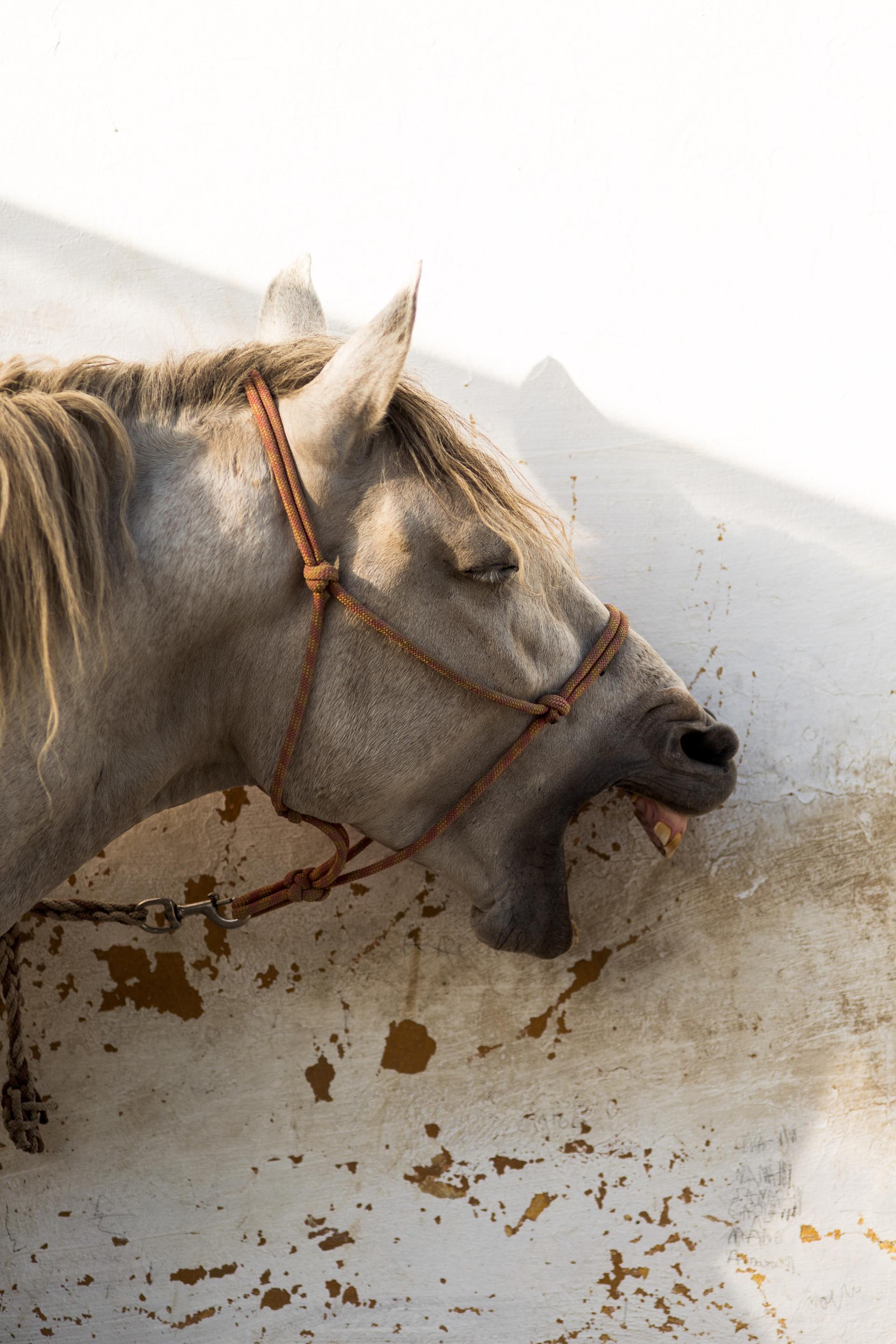
Vaccinations are a reliable, effective and simple aid in the prevention and control of several horse diseases including tetanus, strangles, Hendra virus, equine herpes virus, rhodococcus (rattles), rotavirus, and salmonella. The cost and effort of vaccination is very small compared with the probable financial and emotional cost of treatment.

